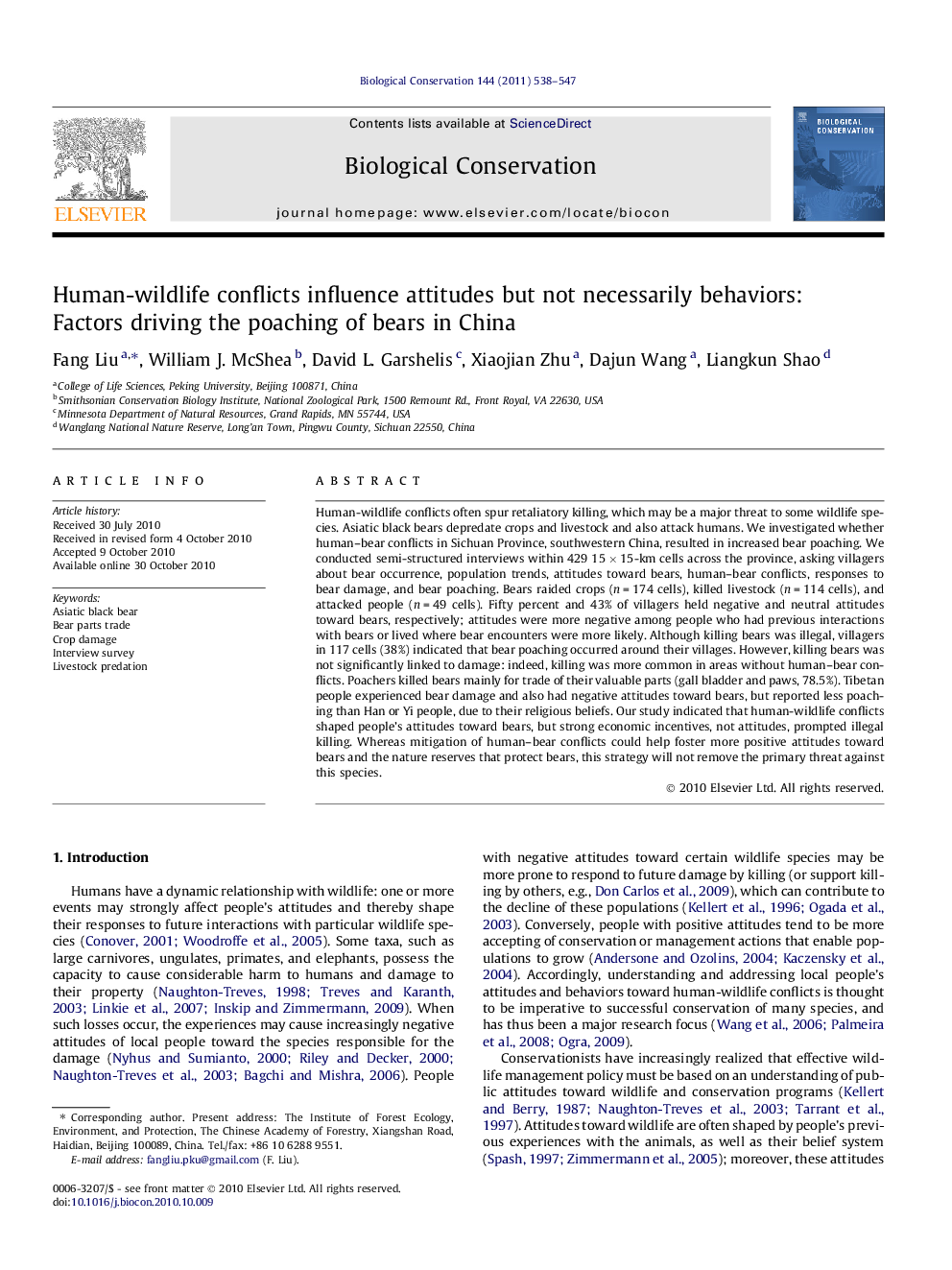| کد مقاله | کد نشریه | سال انتشار | مقاله انگلیسی | نسخه تمام متن |
|---|---|---|---|---|
| 4385715 | 1304547 | 2011 | 10 صفحه PDF | دانلود رایگان |

Human-wildlife conflicts often spur retaliatory killing, which may be a major threat to some wildlife species. Asiatic black bears depredate crops and livestock and also attack humans. We investigated whether human–bear conflicts in Sichuan Province, southwestern China, resulted in increased bear poaching. We conducted semi-structured interviews within 429 15 × 15-km cells across the province, asking villagers about bear occurrence, population trends, attitudes toward bears, human–bear conflicts, responses to bear damage, and bear poaching. Bears raided crops (n = 174 cells), killed livestock (n = 114 cells), and attacked people (n = 49 cells). Fifty percent and 43% of villagers held negative and neutral attitudes toward bears, respectively; attitudes were more negative among people who had previous interactions with bears or lived where bear encounters were more likely. Although killing bears was illegal, villagers in 117 cells (38%) indicated that bear poaching occurred around their villages. However, killing bears was not significantly linked to damage: indeed, killing was more common in areas without human–bear conflicts. Poachers killed bears mainly for trade of their valuable parts (gall bladder and paws, 78.5%). Tibetan people experienced bear damage and also had negative attitudes toward bears, but reported less poaching than Han or Yi people, due to their religious beliefs. Our study indicated that human-wildlife conflicts shaped people’s attitudes toward bears, but strong economic incentives, not attitudes, prompted illegal killing. Whereas mitigation of human–bear conflicts could help foster more positive attitudes toward bears and the nature reserves that protect bears, this strategy will not remove the primary threat against this species.
Journal: Biological Conservation - Volume 144, Issue 1, January 2011, Pages 538–547